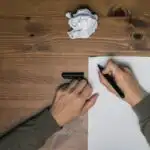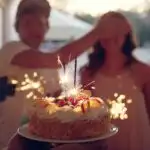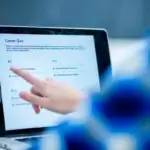A visual brain teaser is a puzzle that challenges children to apply logic to solve a problem.
It’s a fun way to get children to engage and develop observational skills.

In this guide, we’ll talk a bit about the benefits of visual brain teasers, and we will share 15 of our favorite tried and tested puzzles for you to use with your own students.
Which one will you start with?
As with any type of brain teaser, visual brain puzzles are great for stimulating your children’s minds in a fun and interesting way.
Visual brain teasers encourage critical thinking and test your student’s observational skills.
They promote logical thinking and improve problem-solving skills. Brain teasers can also help to improve concentration and memory.
If you’re about to start a tricky lesson with your students, it can be helpful to start with a relevant visual brain teaser to warm up their minds and prepare them for a challenge.
These visual brain teasers can be adapted for your students to work on individually, as a group, or together as a class.
There’s a huge array of visual brain teasers you can use in the classroom – below are just 12 of our favorites. These have been a huge hit with the students we’ve worked with:
1. Spot The Difference
Spot the Difference is an absolute timeless classic, and it’s a visual brain teaser that many children will have been exposed to from an early age.
Provide your students with two images that are almost identical but have some subtle differences, and ask them to identify what those differences are.
We love this puzzle as you can make it as difficult or as easy as you need to, and you can base it on a variety of themes.
2. Rebus Puzzles
These are puzzles where pictures, letters, and numbers are used to represent words or parts of words.
For example, the word “understand” can be visually depicted as the word “stand” beneath the word “under”.
Rebus puzzles can prove to be a lot of fun for students, and, again, you can make them super simple or a little harder, depending on the age and understanding of the children in your class.
3. Optical Illusions
Optical illusion puzzles are images that are designed to be a little bit visually deceptive.
They are great as they can spark debate over who can see what.
Well-known optical illusions include the lilac chaser, the young woman / old woman, the impossible trident, and the cafe wall illusion, but there are so many to choose from.
4. Hidden Objects
Provide your students with an image and ask them to look for hidden objects within it.
These puzzles often feature bright colors and patterns, which children love.
5. Magic Eye Images
Magic eye images are a similar visual brain teaser to hidden objects, but this time, your students are looking for 3D objects.
6. How Many Squares Or Triangles
Provide students with a complex geometric image and ask them to count the total number of a particular shape within it.
These images often have overlapping or smaller shapes within larger ones, making the counting challenging.
You’ll often find this brain teaser done with squares, but it works just as well with triangles.
7. Incomplete Drawings
Present the children with a drawing that isn’t finished and ask them to guess what the rest of the image might look like.
You could even hand out worksheets and ask them to finish the drawing themselves.
8. Stroop Effect
The Stroop effect is a visual brain teaser that’s guaranteed to make your students giggle as they stumble over the answers.
This puzzle helps children understand how the brain processes information as they attempt to name the color of the words while avoiding saying the written words themselves.
For example, the word pink might be written on the paper, but it’s in a blue font, so the students need to say ‘blue’.
When your students get the hang of it, try to get them to do it faster and faster.
9. Mazes
Mazes can be designed to be super simple for beginners or more complex as students advance.
These are perfect for problem-solving.
10. Mirror Reflections
Show your students an image and ask them to explain what it would look like reflected in a mirror in various positions.
11. Pattern Sequences
Show a series of images where there’s a pattern of change between each image. Students must determine the next image in the sequence based on the pattern.
You can begin with simple shapes and work your way up to more advanced patterns to really work their logical minds.
12. Overlapping Shapes
Provide images where multiple shapes overlap, and the students need to identify each individual shape.
13. Tangram Puzzles
Tangrams are a dissection puzzle consisting of seven flat pieces called tans, which are put together to form a square.
Challenge your students to rearrange the tans to form a particular shape using all seven pieces, which can’t overlap.
14. Which One Doesn’t Belong?
Present a set of images where one of the images is slightly different or doesn’t belong to the group.
Students should identify and justify why they think a particular image is the outlier.
An easy example to get them started could be a chicken, a cow, a pig, and a spade. Ask the children to point out the image that isn’t the same.
15. Scaled Images
Show students an image that is zoomed in very closely on an everyday object. The challenge is to identify the object when only a small part is visible.
This is another visual brain teaser that is sure to get some laughs from your students.
In Summary
Visual brain teasers and puzzles are wonderful for exercising your students’ minds and testing their logic.
They can help to improve their problem-solving and observational skills while having fun along the way.
We’ve included just 15 of our favorites in the above list, but there are so many options you can introduce to your class.
Further reading: Teaching children about hexagons.
- Homeschooling In High School: Pros And Cons - February 24, 2024
- How Do I Withdraw My Child From School To Homeschool? - February 23, 2024
- How To Not Go Crazy Homeschooling Kids: A Guide For Frazzled Parents - February 22, 2024









Leave a comment